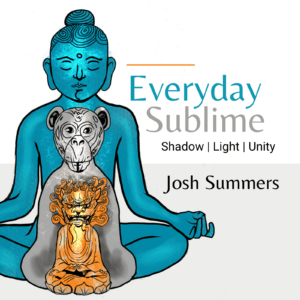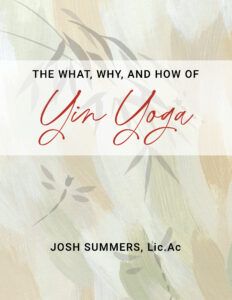Originally recorded on April 22, 2024, Josh reflects on the parallels between artistic and spiritual development. He explores a maturing relationship to tradition. How do we draw from the world’s […]
Blog
The Heart’s Precept | Dharma Talk
Originally recorded on April 15, 2024, in this dharma talk, Josh offers a fresh perspective on how to cultivate an ethical commitment within your meditation practice. Instead of referencing an […]
Chas Di Capua | A Practice For Now
I am delighted to welcome Insight Meditation teacher Chas DiCapua on the podcast to discuss a wide-range of topics, exploring how the dharma can help us meet the tragedies of […]
Seed Selection | Dharma Talk
Originally recorded on April 8, 2024, in this dharma talk, Josh offers ways for you to create your own mantra to use with any bead-based form of meditation practice. A […]
Beads and Seeds | Dharma Talk
Originally recorded on April 1, 2024, in this talk, Josh reflects on his history with bead-based practices, ie. mala mantra, and suggests ways of beginning to integrate this practice into […]
What Good Qi Does | The Six Functions of Qi
In Chinese Medicine, when we think about the health or dysfunction of our bodies and minds, we talk about the health of our Qi, or our vital energy. When our […]
Why Train Online | Qi Chat with Terry + Josh
Why Train Online | Qi Chats with Josh + Terry In this Qi Chat, Terry and Josh discuss some of the ways that an online yoga training is a far […]
Wrong Chord Right | Dharma Talk
Originally recorded on March 4, 2023, I share Herbie Hancock’s story of playing a “wrong chord” during a Miles Davis solo, and what Hancock learned about music and life from […]
Tending the Temple | Talk + Guided Meditation
Originally recorded on February 26, 2024, I offer ways of tending to your external and internal environment for establishing conditions conducive to simplicity, contentment and calm. Practice is life, without […]
Massage, Lymph + Qi Flow | Qi Chats with Terry + Josh
On the podcast this week, Terry and I sat down to discuss our experience of integrating massage and Gua Sha into our yoga and pranayama practice routine. A Gua Sha […]
Amiel Handelsman | Meeting the Meta-Crisis
Until I spoke with Amiel Handelsman, I had mistakenly thought that the term “meta-crisis” referred to the overarching sense that the world is in a massive crisis of overlapping calamities, […]
The Challenge of Pausing | Dharma Talk + Meditation Prompt
On the phone recently, a friend shared a comment from their therapist: “Until you stay in the same place for three years, you’re never going to address and heal your […]
The Yang of Qi Cultivation | Qi Chats with Terry + Josh
Qi Chats is a new series within the Everyday Sublime podcast where Terry and Josh answer your questions and discuss the elements of cultivating Qi. In this first episode of […]
The Heart of Human Conflict | Dharma Talk
Originally recorded on February 12, 2024, Josh shares a dharma talk that weaves reflections on cancer, the psychology of tribalism, cognitive bias and the invaluable role of practicing pauses to […]
The Bitter-Sweetness of Waking Up with Greg Burdulis
Greg Burdulis, a former Buddhist monk, leads you to be calmer, happier, and kinder. He listens, questions, teaches, and trains. He works with individuals and couples using somatics, Buddhism, and […]
Anatomy of a Cookie Monster | A Dharma Story
Recently, one of my sisters and nieces visited us in Maine from Brooklyn, New York. It was a wonderful visit, but on the second day, Uncle Josh ate his niece’s […]
Free Journaling Guide | Ways of Contemplative Journaling
We hope you enjoy this free journaling guide. For hundreds of Yin Yoga, Qi Gong and meditation classes with Josh and Terry, as well as access to practicing with us […]
Crossing the Floods | Dharma Talk
Originally recorded on January 15, 2024, in this dharma reflection, Josh introduces the Buddha’s metaphor of “crossing the flood to the other shore,” as a way of articulating the process […]
A Christmas Tale | Dharma Story
Recorded on December 18, 2023, Josh shares a Christmas story that weaves the humor of family dysfunction with the spirit of healing, repairing and caring for all valuable relationships in […]
Winter’s Essence | Talk + Workshop
Winter's Essence | Talk + Workshop Recorded live on December 4, 2023, Josh reflects on the spiritual essence of winter as manifest in nature and within his family of origin, […]
Oren Jay Sofer | Your Heart Was Made For This
Oren Jay Sofer | Your Heart Was Made for This I welcome Insight Meditation and communication teacher, Oren Jay Sofer, back to Everyday Sublime, to discuss his new book: Your […]




